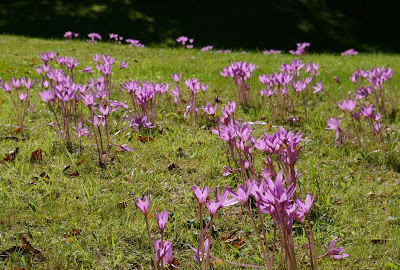 |
| Large Narcissus Fly larva in a Galanthus bulb |
Over the years, in the process of handling large numbers of dormant snowdrop bulbs I have become very sensitive to the feel of a good bulb and a wrong 'un. A good bulb feels heavy and plump, but when there is something amiss it feels different, either light, dry and scaly in the case of fungal disease, or soft and light for other reasons. The most common of these - and it is quite common - is caused by the presence in the bulb of a larva of the Large Narcissus Fly,
Merodon equestris. This species, a hoverfly with colouring mimcing a bee, is on the wing in late spring, and lays its eggs around the dying foliage bases of
Narcissus and
Galanthus (or any other amaryllid). The young larva makes its way into the soil and enters the bulb, not through the neck as often said, but either through the basal plate or through the side of the bulb.
 |
| A typically damaged bulb, soft and discoloured, showing the lateral entry hole. |
It then proceeds to eat its way through the central portion of the bulb, consuming the basal plate and embryonic shoot, then working through the remaining scales, until it is completely hollowed out. The larva is plumply cylindrical, with vestigial legs, and has a thick skin that makes it quite difficult to squish it when found. If undetected it will pupate in the remains of the bulb and emerge the following spring. Detection is actually impossible, unless the bulbs happen to be lifted in summer, as all the action is below ground and the first sign is of trouble is the non-emergence of the plant next spring.
 |
The same bulb, almost
completely hollowed out. |
Where clumps are large and snowdrops (or daffodils) abundant it does little significant damage, but it is most irritating when it settles on prized a bulb of some rarity. Controlling the problem on a large scale is difficult, though fine gauze netting can be used to protect individual clumps, and perhaps a prophylactic spray of systemic insecticide aplied to the clumps before they die-down would work, if you wish to use such things, but we really just have to live with it and get our revenge when possible.
 |
| The adult Large Narcissus Fly, Merodon equestris (Img: Wikicommons) |









































































